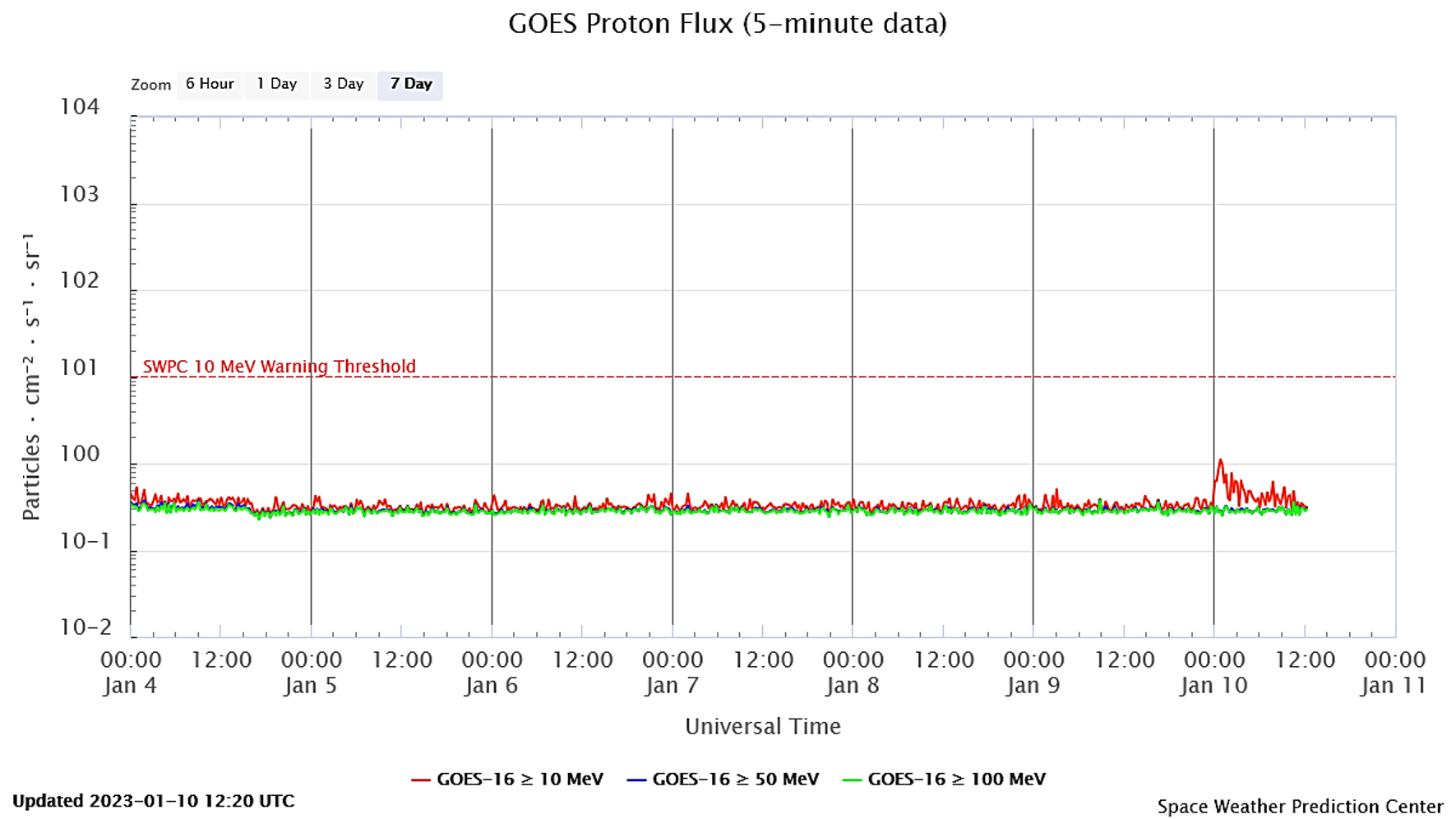On 6 January, NOAA 3182 produced an X1.2 flare peaking at 00:57 UTC. This was the first X-class event since 2 October last year (see this STCE newsitem). To make up for this drought, a second X-class flare was produced, this time by NOAA 3184 on 9 January. This X1.9 flare peaked at 18:50 UTC. The eruptions were discussed in 2 STCE newsflashes (X1.2 and X1.9), which contain also some movies of the eruptions. Underneath a side-by-side comparison of the two flares in extreme ultraviolet (EUV) as observed by SDO/AIA 131. The blooming and diffraction patterns in the EUV images are image artefacts, not related to the flare - See this STCE newsitem for more info.
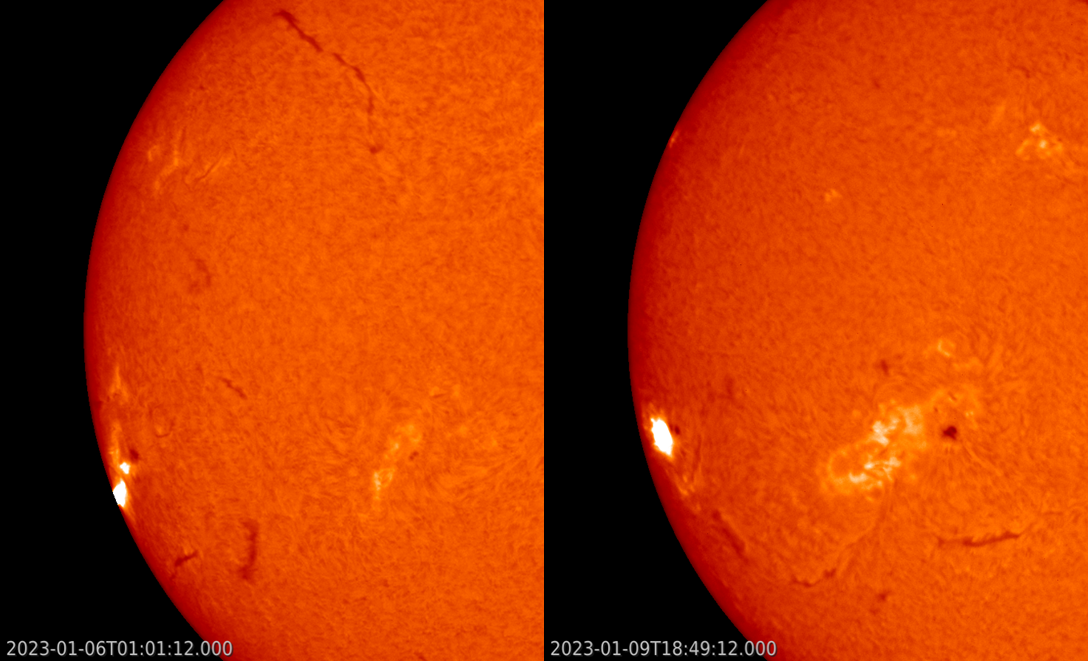
The two flaring events were remarkably similar. Both occurred when the source regions were still very close to the southeast solar limb. The events had similar durations in soft x-rays (SXR) (resp. 24 and 20 minutes), and similar intensities both in SXR (resp. X1.2 and X1.9) and in H-alpha (optical class resp. 2B and 3B). The STCE's SWx Classification page contains more information on these flare classifications. The H-alpha images underneath are from the GONG H-alpha network and show the two flares near their respective SXR peak maximum.
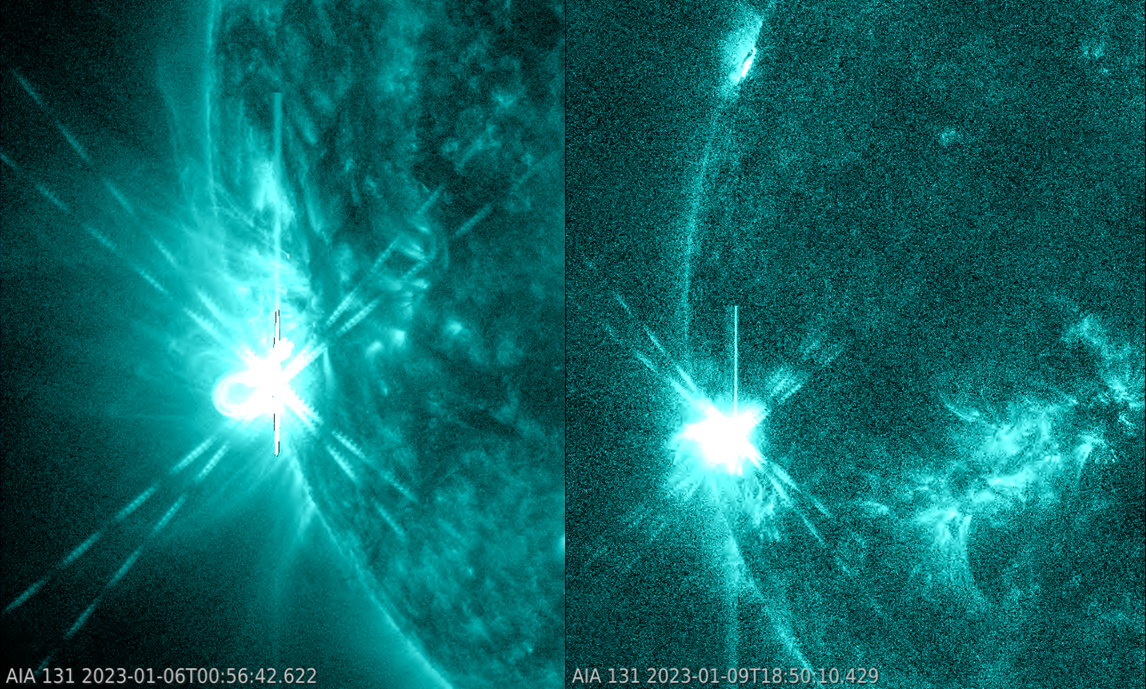
Radio observations indicated that a Tenflare, i.e. a doubling (or more) of the radio emission at 2800 MHz compared to pre-flare values, was associated with both eruptions, with the solar radio flux up resp. 420 and 230 sfu. Enhanced radio emissions were also observed at other frequencies such as 5 and 8.8 GHz by the Radio Solar Telescope Network (RSTN) from the United States Air Force. The radio spectrograms showed the absence of a Type II burst after both flaring events. This would otherwise have been suggestive of an associated coronal mass ejection (CME), but coronagraphic images have meanwhile confirmed the radio observations and ruled out the presence of a CME.
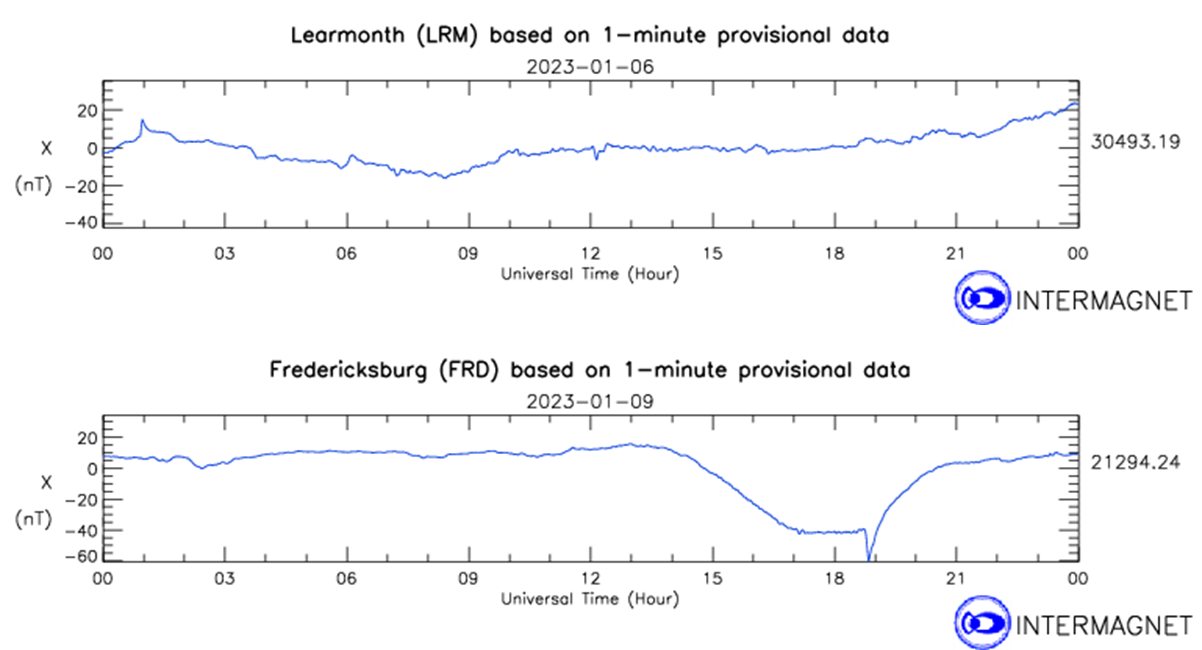
The space weather effects were rather limited. The intense x-ray and EUV emissions disturbed the ionosphere, and High Frequency (HF) communications were degraded mainly over the Pacific and resp. Australia/New Zealand and Latin America. PECASUS issued a HF COM advisory for the international civil aviation in both cases. The enhancement of the ionosphere created also a sudden change in the Earth's magnetic field, called a "solar flare effect" or also known as "magnetic crochet" due to the peculiar shape it leaves in a magnetogram. A small sudden "spike" can be seen in the above magnetograms (X-component) from Learmonth (6 January) and Fredericksburg (9 January) around the time of the flare's SXR peak (graphs obtained via Intermagnet. The change in the magnetic field strength was up to about 10 to 20 nT for both flaring events, depending on the location (sunlit side) of the magnetometer station. For very strong flares such as the two main Halloween flares in 2003 and the Carrington event in 1859, these values can be well over 100 nT, putting things a bit in perspective. Magnetic crochets may influence systems and operations which are sensitive to the magnetic field amplitude, such as magnetic anomaly surveys and directional wellbore drilling.
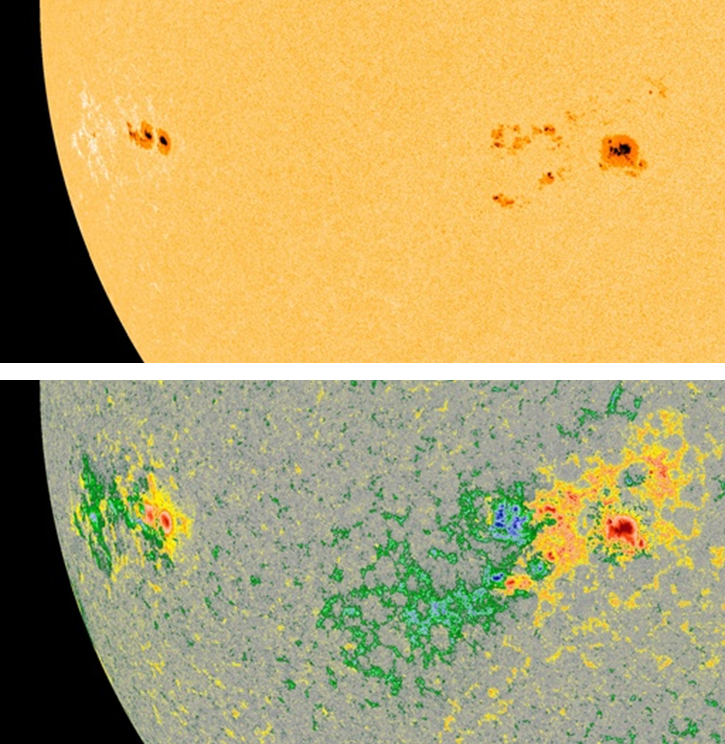
Differences between the two X-class flares were few. The outlook of the source region is one of them. The 6 January event seems to have been caused in the trailing portion of a large sunspot group with widely scattered sunspots, possibly a co-habitation of 2 or more closely spaced sunspot regions. On the other hand, the source of the 9 January flare was a much smaller and more compact sunspot group containing opposite magnetic polarity spots in its main portion. The above SDO/HMI white light image (upper) and magnetogram (lower image) show the difference between the two regions on 10 January around noon. Another difference is a small enhancement in the greater than 10 MeV proton flux that was recorded shortly after midnight on 10 January, so about 5 hours after the X1.9 peak, as shown in the plot underneath (GOES). The maximum flux was about 1 pfu, so well below the alert threshold of 10 pfu. Such an enhancement was not observed following the first X-class event. It remains to be seen if there is a connection between the X-class flare from NOAA 3184 and the proton enhancement, as no obvious CME was associated with the X1.9 flare, and such small enhancements may have other causes. Nonetheless, if the connection is there, then there might be an increasing chance on a proton event if NOAA 3184 remains flare-active as it moves further over the solar disk, thus gradually providing a better magnetic connection with the earth-environment for those energetic particles.
